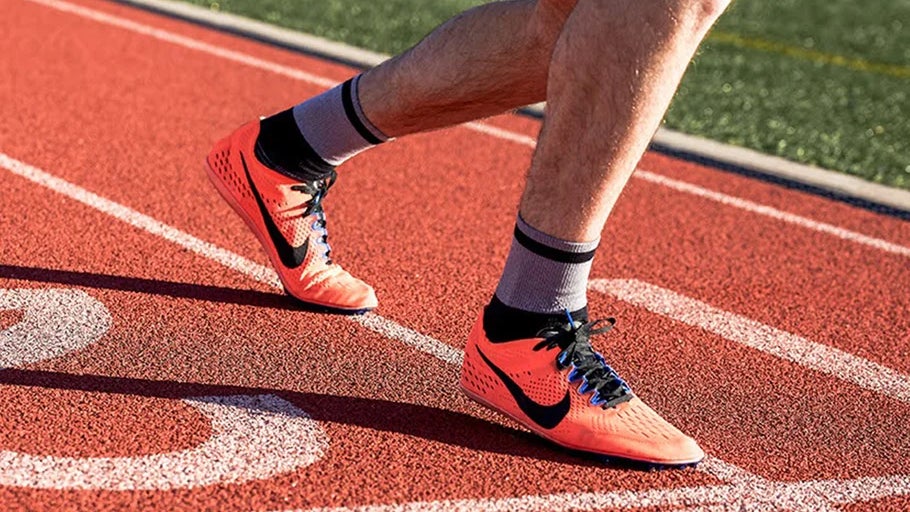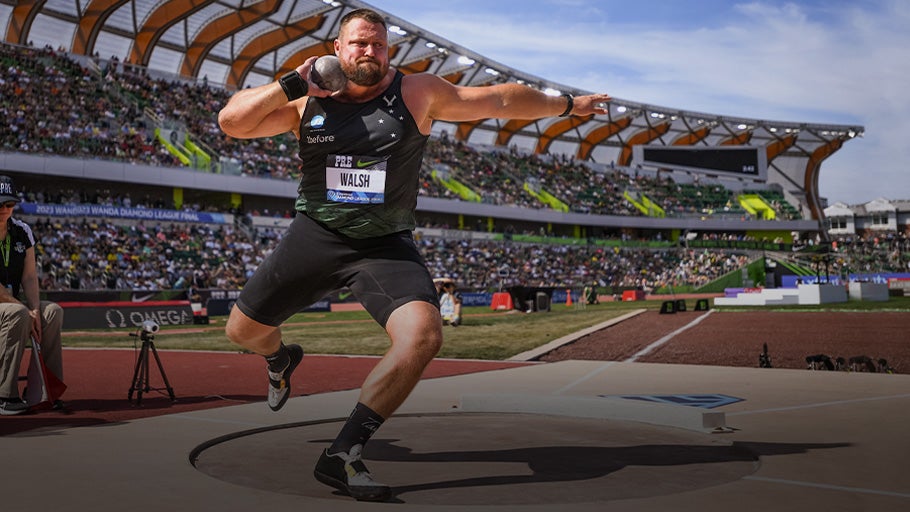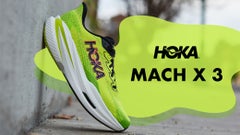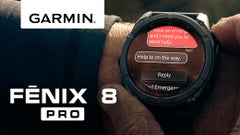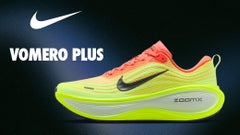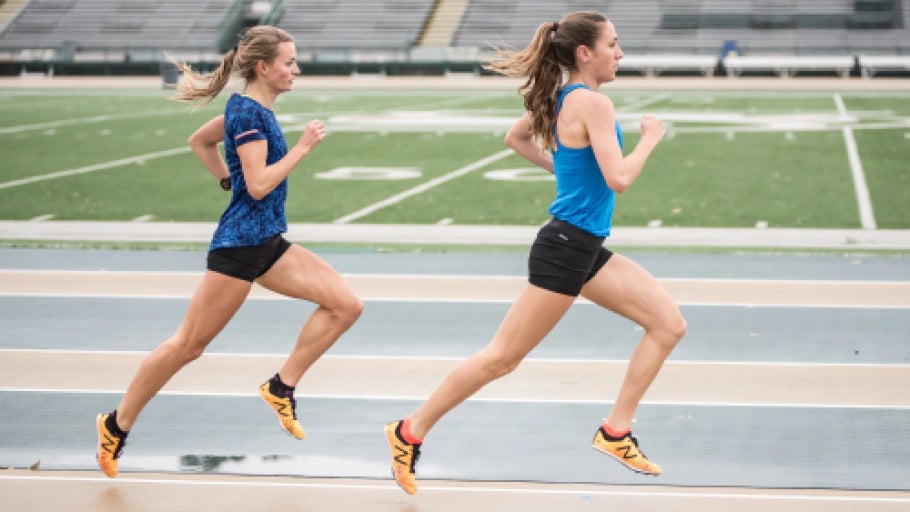
The Best Middle and Long Distance Spikes of 2025
We get goosebumps for the roar of the crowd and the adrenaline surge as the bell rings for the final lap of a distance race under the bright lights of the track. Runners summon their final push, fight for position, and give their all to kick for a place on the podium and in the record books. And with the latest advanced footwear technology, i.e. superfoams and carbon plates, it has never been more fun to toe the line. Below, we have compiled a list of the best distance spikes on the market, and we've added some of Joe Rubio's best advice for how to run your best Middle Distance races. From experienced athletes to beginners, we have the distance spikes you need to get the ultimate edge and your best times yet.
For a detailed explanation of how we test shoes and why you should trust our recommendations, read about our running shoe testing methodology.
What Makes a Spike Good For Distance?
Distance events are generally split into two categories: middle-distance and long-distance. Middle distance track events include the 800m, 1500m, and 1600m, while long distance track events include the 3000m, 3200m, 5000m, and 10,000m events.
Likewise, distance track spikes are categorized as either middle-distance spikes or long-distance spikes. Both types are similar in terms of weight and fit (more relaxed than sprint spikes, but will still be contoured and snug), but vary slightly in their characteristics. Mid-distance spikes generally will have a more aggressive design, such as a stiffer and/or longer plate or a greater number of pins in a specific layout, all with the goal of getting runners on their toes as fast as possible.
Long-distance spikes generally will be the lightest possible weight, more flexible, and the most cushioned throughout (especially under the heel and midfoot, compared to mid-distance), all to be more forgiving and keep your legs fresher over longer distances.
In terms of cushioning level, it really is a matter of personal preference, unless you want the maximum possible amount of energetic superfoam. And while we usually don't recommend using a mid-distance spike for a long-distance event simply from a comfort perspective, it's not unusual to see long-distance spikes being worn during mid-distance races. The latest batches of highly cushioned super spikes definitely blur the lines between mid and long, with several models proving highly capable across a very broad range of distances.
Best Distance Spikes for Beginners
Nike Zoom Rival Distance
In the field of beginner spikes, without a doubt in our minds or books, the Nike Zoom Rival Distance easily leads the way industry-wide. This versatile "can't-go-wrong" option has enough cushioning and speed for any new or up-and-coming runner trying to find their sweet spot on the track without breaking the bank. It remains accessible, without chasing some of the radical geometries or harsh rigidities of elite-level spikes, yet still gives athletes a noticeable boost in performances. It is a solid choice for fit and competitive advantage.
At a glance:
- 7.1 oz | 201 g | 4 pins
- Phylon foam, Pebax forefoot plate
HOKA Crescendo MD 2
The HOKA Crescendo MD 2 is a highly cushioned entry-level track spike with an aggressive 6-pin plate to rip hot laps on the track. While the "MD" in the name stands for "mid distance," we see these spikes as capable from 400m to 3200m and beyond. Its broader range and a thicker stack of comfortable foam swayed us to give it the nod in a tossup with New Balance MD 500 v9 (if you need an added option to consider). As a bonus, if you could benefit from an extra instep volume or arch space, the budget-friendly and versatile Crescendo also historically fits slightly more spaciously than many other track spikes.
At a glance:
- 6.7 oz | 190 g | 6 pins
- Compression molded EVA foam, full-length Pebax spike plate
Best Long Distance Spikes
Nike ZoomX Dragonfly 2 / Elite
Just in case we thought the best couldn't get better, Nike gave the most dominant long distance spike in history a killer update and a separate god-tier version: the ZoomX Dragonfly 2 and ZoomX Dragonfly 2 Elite.
When both versions have ultimate responsiveness with an unreal cushioning-to-weight ratio, what's not for us to love? To differentiate, the Dragonfly 2 continues the purposeful usage of a Pebax plate, which is generally more flexible and slightly lighter weight than carbon fiber. This plate is also lighter and more responsive than the previous OG Dragonfly. The Elite opts for a full carbon fiber plate for maximum stiffness and propulsion while reducing weight even further than its sibling.
Rest assured that Dragonfly super spikes have been used to set multiple world records in the 5K and 10K. Now, distance runners everywhere have access to these devastatingly efficient tools, both crafted to carry you to stunning times.
At a glance:
- 5.0 oz | 142 g | 4 replaceable pins — Dragonfly 2
- 4.8 oz | 136 g | 4 permanent pins — Dragonfly 2 Elite
- Full-length ZoomX 100% PEBA superfoam (both), full-length plate (2: Pebax | 2 Elite: carbon fiber Flyplate)
adidas adizero Avanti TYO
The adidas adizero Avanti TYO has everything runners look for in a long distance super spike, with a unique and innovative approach from the adidas team fueling this racer. The Lightstrike Pro foam has exponentially grown in popularity on the road marathon circuit, and track and field athletes have quickly adopted the foam to the track.
While most shoes have a plate in the midsole, the adizero Avanti TYO uses a design specific to the adidas adizero performance line. Instead of incorporating the plate, adidas employs their patented EnergyRod technology, which features "rods" placed under the metatarsal of the foot, creating a naturally snappy feel. These rigid rods and bouncy super foam deliver a highly efficient ride that runners can trust, especially for longer-distance events.
Now, the adizero Avanti does weigh in slightly heavier than its competitors, but that does not mean it is slower to the finish line. World-class athlete, Tobi Amusan, set a new World Record in the 100m hurdles at the 2022 World Championships in Oregon (yes, you read that right, a distance spike was worn to smash a world record in the 100m hurdles event). So the adidas adizero Avanti has more than proven that it has what it takes to deliver the elite performance you are looking for on race day.
Best Middle Distance Spikes
Nike Air Zoom Victory 2
The Nike Victory line is a legend in the track and field world and has featured on the feet of athletes in almost every major track and field event in the last decade. The Air Zoom Victory 2 continues the model's legacy but now offers the super spike features needed to deliver next-level performances in the 800m up to Mile.
The Nike Air Zoom Victory 2 is designed with Nike's lightweight and all-around amazing ZoomX super foam in the midsole, which is also accompanied by an Air Zoom Unit and an aggressive carbon fiber plate, creating a shoe with an incredible balance of speed, efficiency, and race-day comfort. These super spike features allow a highly responsive underfoot experience and an impressively stable platform that gives runners what they need to stay up on their toes. When athletes lace up the Air Zoom Victory 2, they will undoubtedly feel they have the edge they need to go after record times.
While the Nike Air Zoom Victory 2 might be too aggressive for longer-distance races, this shoe exceeds expectations as a middle-distance specialty spike. The Air Zoom Victory 2 has the stability for powerful runners but also provides the lightweight ride that more finesse runners are looking for.
At a glance:
- 4.8 oz | 136 g | 4 pins
- ZoomX 100% PEBA superfoam, dual-chambered Air Zoom unit, carbon fiber Flyplate, Atomknit upper
New Balance FuelCell SuperComp MD-X v3
Not to be overlooked, we need to recognize the New Balance FuelCell SuperComp MD-X v3 as a ridiculously worthy and championship-decorated competitor for the top pick in this category. Loaded with premium features like 100% PEBA superfoam and a full-length carbon fiber plate, this spike delivers world-class speed.
As our pick for exceptional versatility due to its stunningly broad range, the SuperComp MD-X's optimum performance encompasses events spanning from 800m to 5000m distances.
At a glance:
- 6.0 oz | 170 g | 6 pins
- FuelCell 100% PEBA superfoam, full-length carbon fiber plate
Joe Rubio's Guide to Middle Distance Running
We're going to take a wild guess here that, if you're looking at Middle Distance spikes, then you're probably preparing for a Middle Distance race.
And if that's the case, have you met Joe?
Pro Running Coach of the HOKA Aggies and owner of Running Warehouse, Joe Rubio has written a guide that explains his fundamental training principles for the competitive 1500m runner in an in-depth, easily downloadable manual.
There are really no training “secrets” hidden within these pages. 95% of what’s written here is the same information you’d find in books written by Harry Wilson, Dr. Joe Vigil, Ray/Benson, Martin/Coe and others, it’s just written from a slightly different perspective. There is not a profound fundamental difference in training schedules between this manual and those texts, which is a good thing. It implies that there is an established successful route to follow if racing a fast mile is your goal, this one follows a similar path.
This manual was initially written to serve as a reminder to the author of what training worked for his milers over the years. In subsequent seasons it has served as a guide to potential athletes on exactly what the author’s training philosophy entails. This manual is based on the same fundamental training principles that the majority of top middle distance runners have used with success since the 1960’s. Additionally, several current concepts have been incorporated based on recent data from reliable sources. The primary thing to take away from this manual is that the major training themes that have worked for the past 40 years continue to be valid today. You just have to follow them for a few seasons, and they will pay off.
Lace Up and Go
Whether you're taking the plunge and ordering some new spikes, or just flipping through Joe's advice for optimizing your middle distance performances, we hope something in this article has helped to make you faster.
But you'll never know until you go. So tighten those pins one last time. Tie those runner's loops, and lets hit the track. Remember to lean at the line!
FAQ
What’s the difference between mid-distance and long-distance track spikes?
Mid distance spikes blur the lines between sprint spikes and long distance spikes. Sprint spikes commonly don't feature any heel cushioning and they tend to be stiffer, sturdier, and heavier to handle peak forces. At the other end, long distance spikes feature the tallest amounts of full-length cushioning and they're built to be the absolute lightest weight possible. Meeting in the middle, mid distance spikes blend these features and are a bit more aggressive than their longer distance counterparts, in general. Compared to long distance spikes, mid distance options often have more pins in the forefoot, longer or stiffer plates or shanks, slightly less cushioning under the rearfoot, and might be just slightly heavier and sturdier.
How do I know if my track spikes fit correctly?
We know the fit of track spikes can be tricky, for sure. Unlike typical running shoes, spikes aren't built for comfort but for performance. Compared to shoes, spikes will automatically fit narrower and snugger, with less structured or supportive uppers, all for racing performance. It's normal for the ends of your toes to be much closer to the end fo spikes, but your feet still shouldn't be crammed. Spikes will feel smaller than you're used to, but make sure they feel secure (not too loose, no heel slipping) without being OVERLY tight (still a touch of room for toe comfort). Think about how long you'll have to wear your spikes (how many minutes your race will take, plus a handful of minutes before and after), and remember you can do part of your warm up in shoes before switching to your spikes. Check out our comprehensive guide on How to Fit Track and Field Spikes for more in-depth guidance.
How often should I replace my track spikes for mid or long-distance running?
Since the vast majority of spikes have replaceable pins instead of permanent pins, it's not uncommon to lose at least 1 or 2 pins at almost every track meet. For spikes in general (the entire shoe, including the upper, foam, plate, and outsole), depending on the frequency and the number of meets, they'll often be completely used up and broken down after one full school season.
Can I use the same spikes for both mid-distance and long-distance events?
While you can use the same spikes for both distance events, it's significantly more comfortable to use long distance spikes for mid distance events than vice versa. Many mid distance spikes have enough range versatility to go long distance, but it depends on your comfort level in them.
How do I care for my track spikes to maximize their lifespan?
Try to use your spikes only on soft track surfaces and when you have to for racing and some practice. Carry your spikes and keep them in a separate bag when not in use. If you want, gently wipe away dirt, grit, and moisture after use before putting them away. Properly unlace your spikes instead of smashing your feet in them repeatedly or pulling them off while still tied.
Are track spikes allowed in all running events and meets?
Track spikes are only for the track, and your coach will know best about what is and isn't allowed at each of your meet locations. If spikes are permitted, the "standard" pins are usually pyramid-shaped and 1/4-inch length or shorter. Many facilities discourage longer lengths and other shapes, such as needles, but virtually all track spikes come with standard pyramid spikes in the box.

